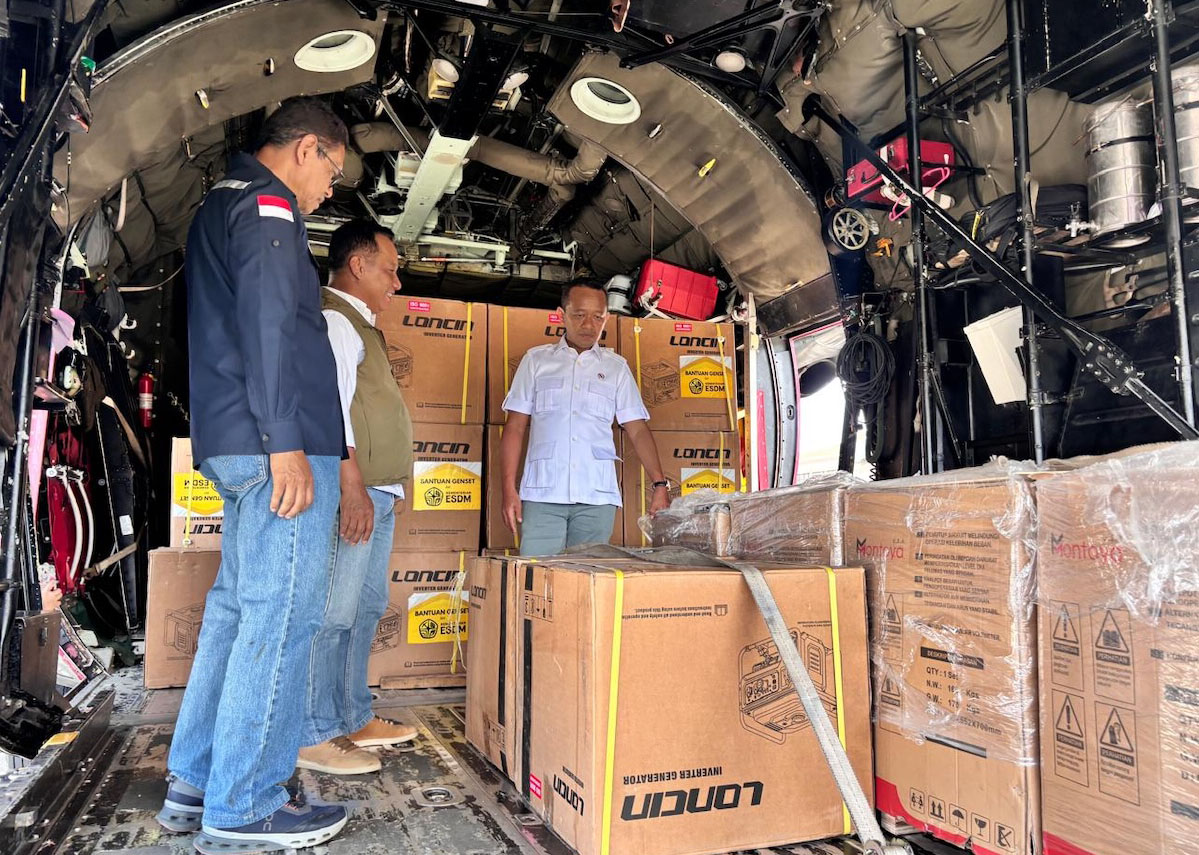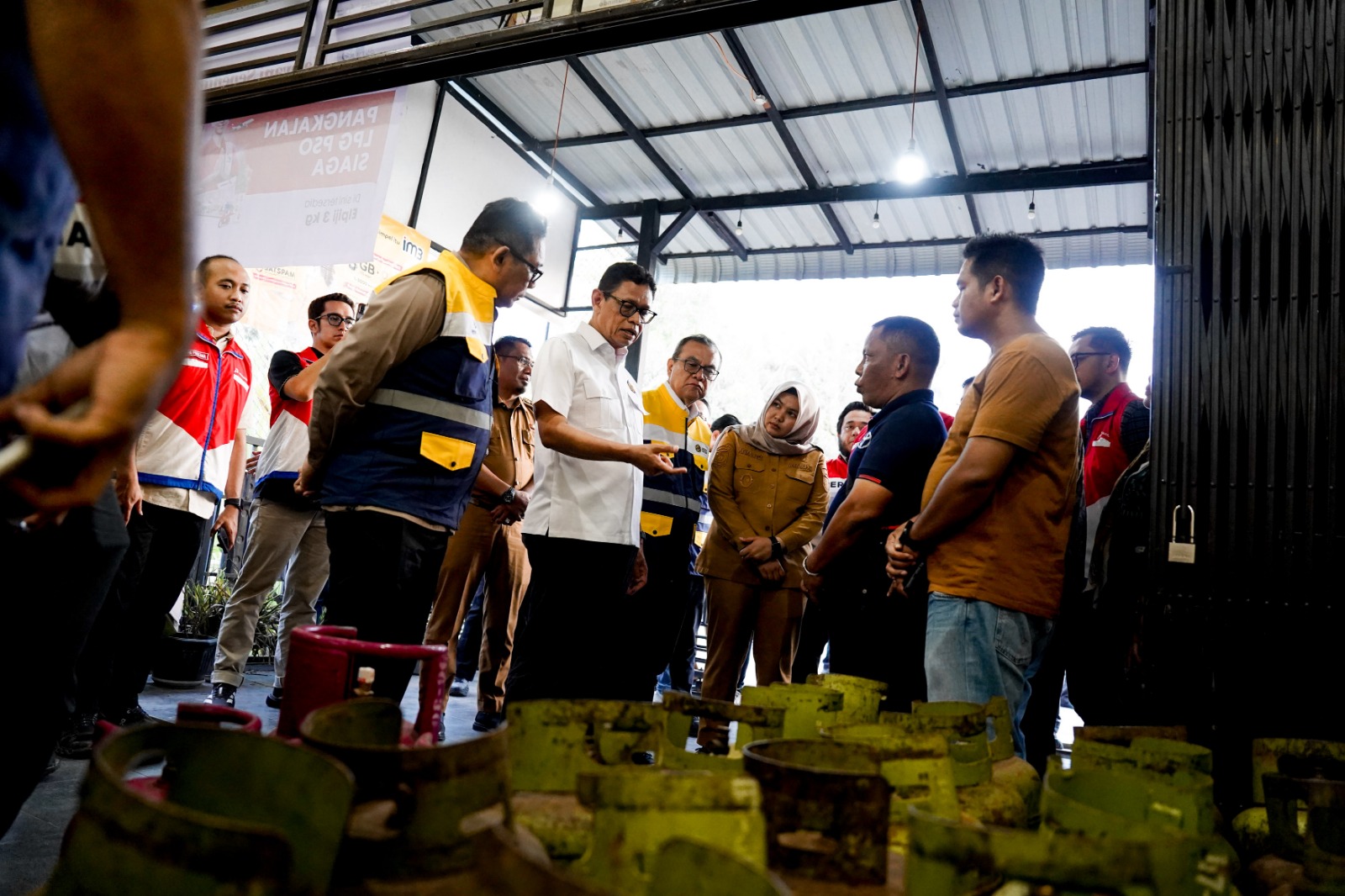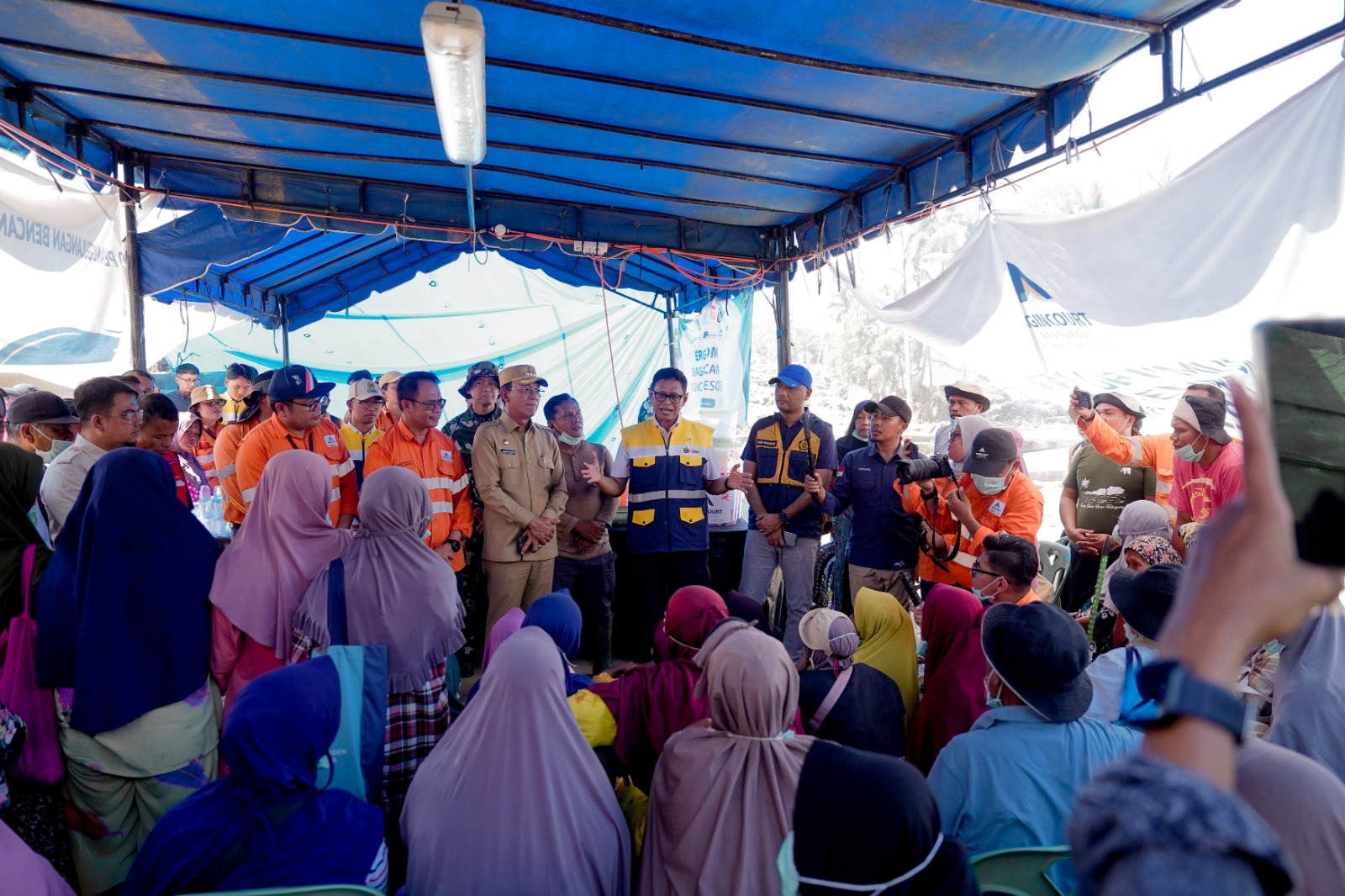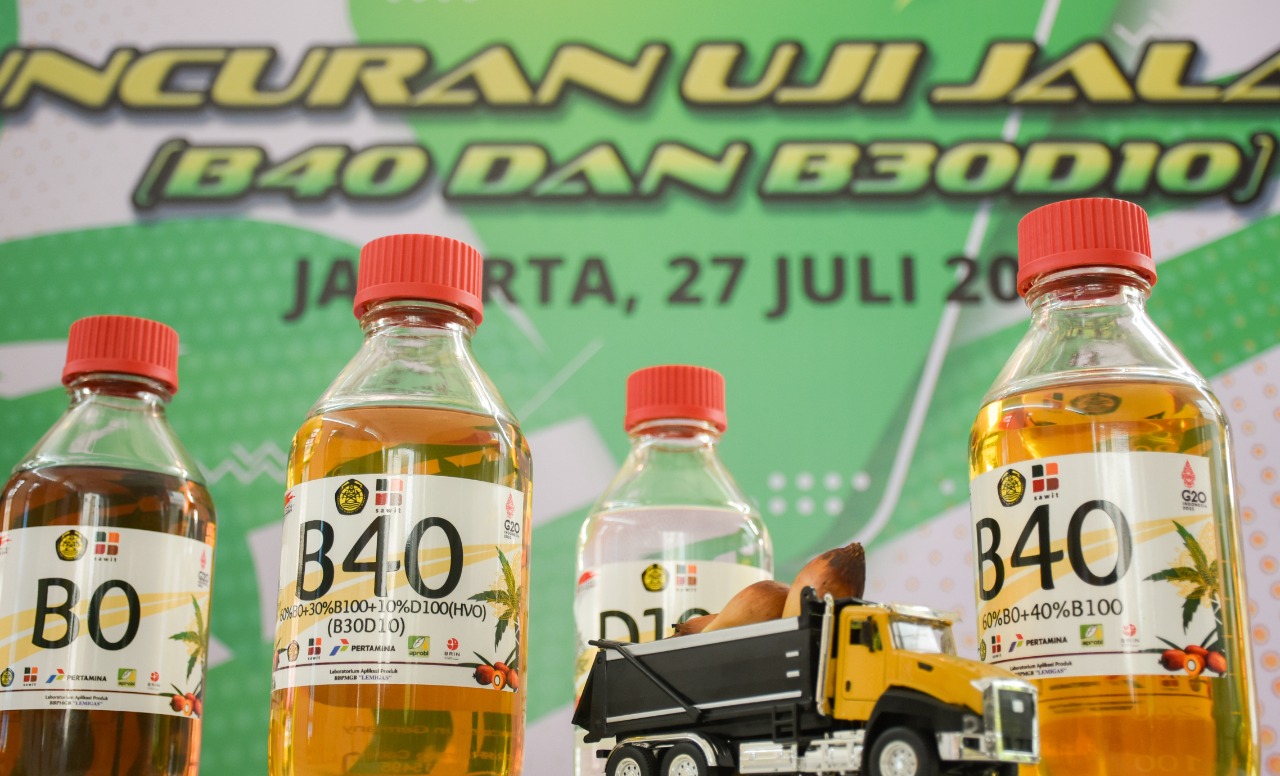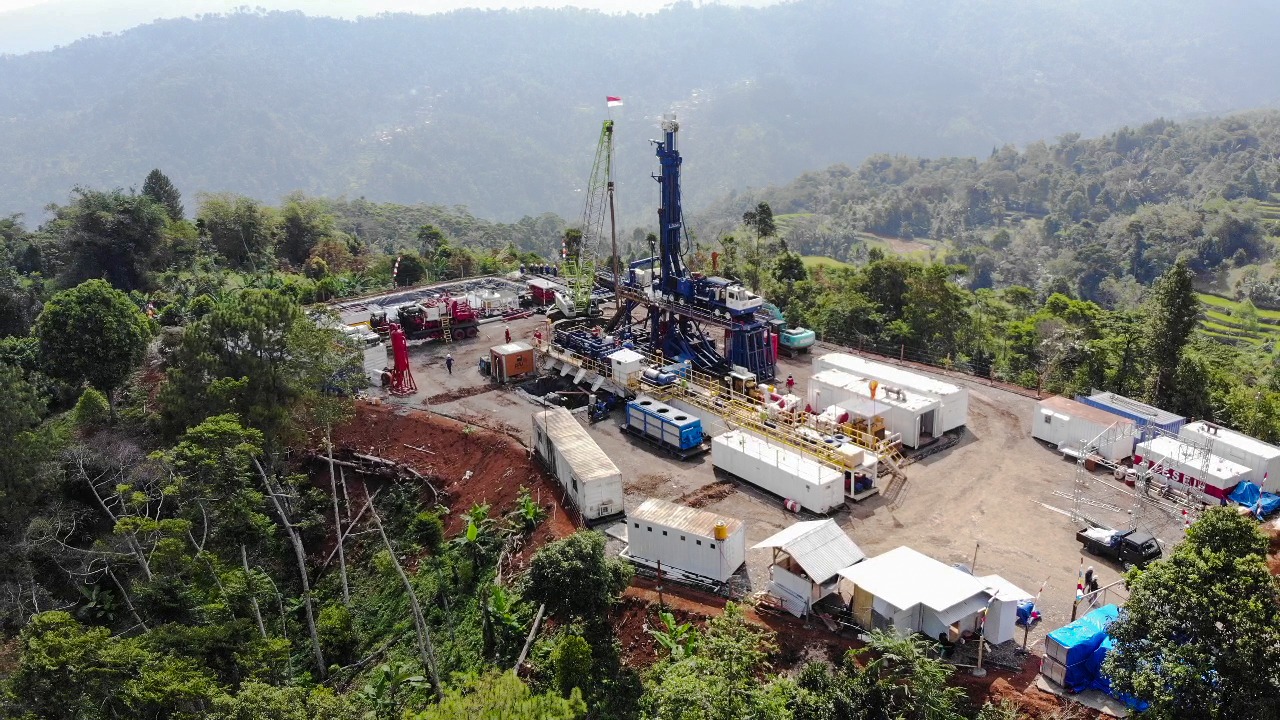
Cisolok-Cisukarame Geothermal Exploration, a Quick Win to Meet New, Renewable Energy Target
MINISTRY OF ENERGY AND MINERAL RESOURCES
REPUBLIC OF INDONESIA
PRESS RELEASE
NUMBER: 317.Pers/04/SJI/2021
Date: 8 September 2021
Cisolok-Cisukarame Geothermal Exploration, a Quick Win to Meet New, Renewable Energy Target
Geothermal projects are both capital-intensive and labor-intensive, but we can get a series of positive multiplier effects from geothermal development, such as employment, technology transfer, and improvement of on-site infrastructure that supports the economy to grow and the community to progress gradually in line with the stages of a geothermal development project, said Geothermal Director of Indonesian Ministry of Energy and Mineral Resources (EMR), Harris, in Jakarta (8/9).
The development of geothermal power plants is indeed part of Indonesia's national strategic projects of electricity infrastructure. It is expected to contribute to the achievement of the 23% target of new and renewable energy share in the energy mix by 2025. Geothermal is also an alternative energy that supports the energy transition program in an effort to reduce greenhouse gas emissions. In the roadmap of geothermal power plant development, the target for installed capacity is 9,300 MW in 2035.
To fulfill the development target, the Ministry of EMR has launched a quick win which is called geothermal exploration program by the government (government drilling). The program aims to reduce upstream risks so as to improve the economics of geothermal power plant projects and attract investment in the new and renewable energy subsector as a result of increasingly competitive prices. The Cisolok-Cisukarame project is the first of the government geothermal drilling operations. In the near future, another exploration drilling will be conducted at the Nage prospect in Ngada, East Nusa Tenggara.
While the government is committed to continuously providing electricity for public welfare, including through the exploitation of geothermal energy in national parks, it has also continued to pay attention to the preservation of conservation areas. The geothermal exploration in the Cisolok-Cisukarame prospect, which is partly located within the Mount Halimun Salak National Park, is made in synergy with the management of the area, including by conserving biodiversity.
The utilization of geothermal energy in the Mount Halimun Salak National Park has adopted good engineering practices since the 377 MW Gunung Salak Geothermal Power Plant started operation in 1994. To date, the power plant operation is a proof that the environmental sustainability of the forest areas can still be maintained even though its geothermal resource is used to fuel one of the largest power plants in the Java-Madura-Bali (Jamali) power grid system.
It is estimated that the Cisolok-Cisukarame geothermal resource has a potential of 45 MW, and the plan is to develop a 20 MW power plant. The drilling operation has obtained permits as well as met the technical aspects of geothermal exploitation and the requirements of Occupational Safety and Health and Environmental Protection (K3LL). The permits that have been obtained prior to the spud-in include the UKL-UPL (environmental management efforts) document and Environmental Approval from Sukabumi Regency Government, the Permit to Use and Exploit Surface Water (SIPPA) from West Java Provincial Government, and the approval to Use the Environment for Geothermal Projects (PJLPB) from the Ministry Environmental and Forestry.
The Cisolok-Cisukarame geothermal development project is covered in the spatial plan of Sukabumi Regency as set out in Regional Regulation No. 22 of 2012 on the 2012-2032 Regional Spatial Plan of Sukabumi Regency. Moreover, Law Number 21 of 2014 on Geothermal Energy and Law Number 11 of 2020 on Job Creation and its derivative regulations set out that geothermal development activities, which consist of exploration, exploitation, and operations, in conservation areas including national parks can be conducted in utilization zones through the mechanism of the use of the environment for geothermal projects.
To comply with the requirements on geothermal exploration in forest areas, an environmental management document in the form of a UKL-UPL document has also been prepared. It contains the initial condition and management aspects of the environment, which cover air and water quality, noise, hydrology, road damage, flora and fauna disturbances, slope stability, garbage and waste as well as social and cultural issues. Based on the environmental and forestry regulations, the exploration stage of a geothermal project that does not significantly impacts on the environment is exempted from completing an AMDAL (environmental impact assessment), or in other words, the UKL-UPL will suffice.
"Currently, the utilization of geothermal energy to fuel power plants is 2,175.7 MW or 9.2% of the total resource potential; we'll continue to work hard to achieve the target while paying close attention to the aspects of safety and environmental sustainability", Harris concluded. (IY)
Head of Bureau of Communication, Public Information Services, and Cooperation
Agung
Pribadi (08112213555)
Share This!

